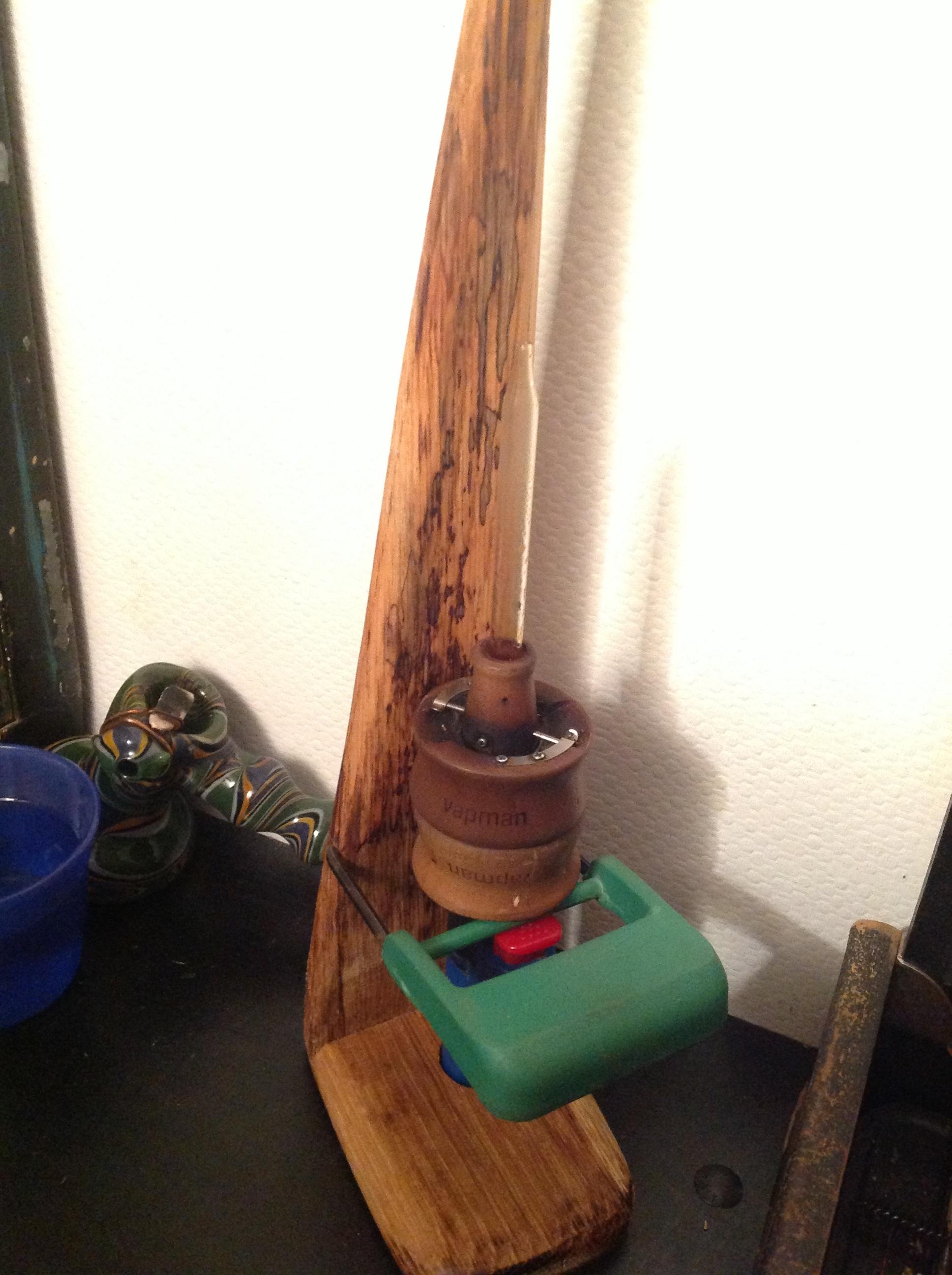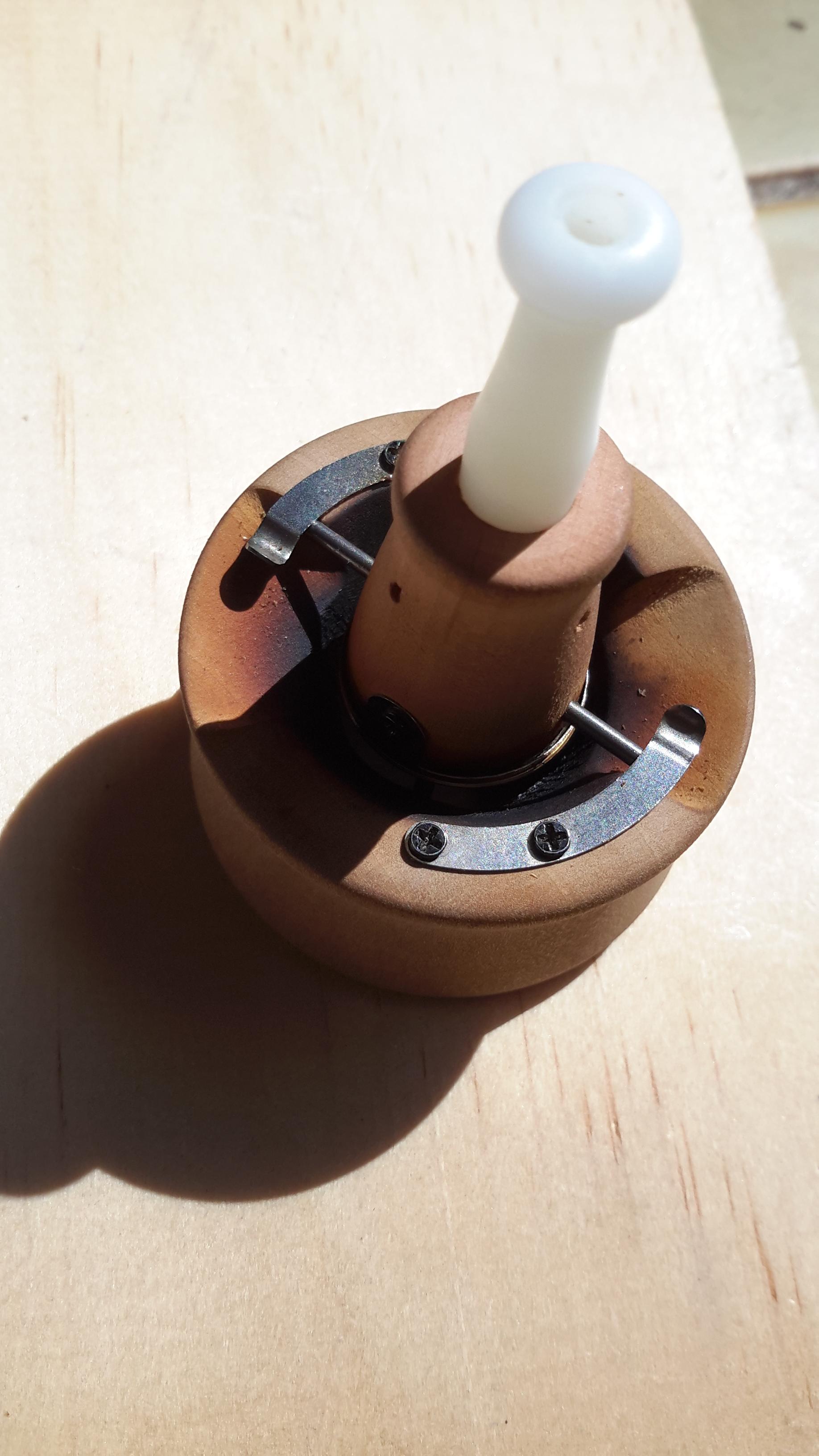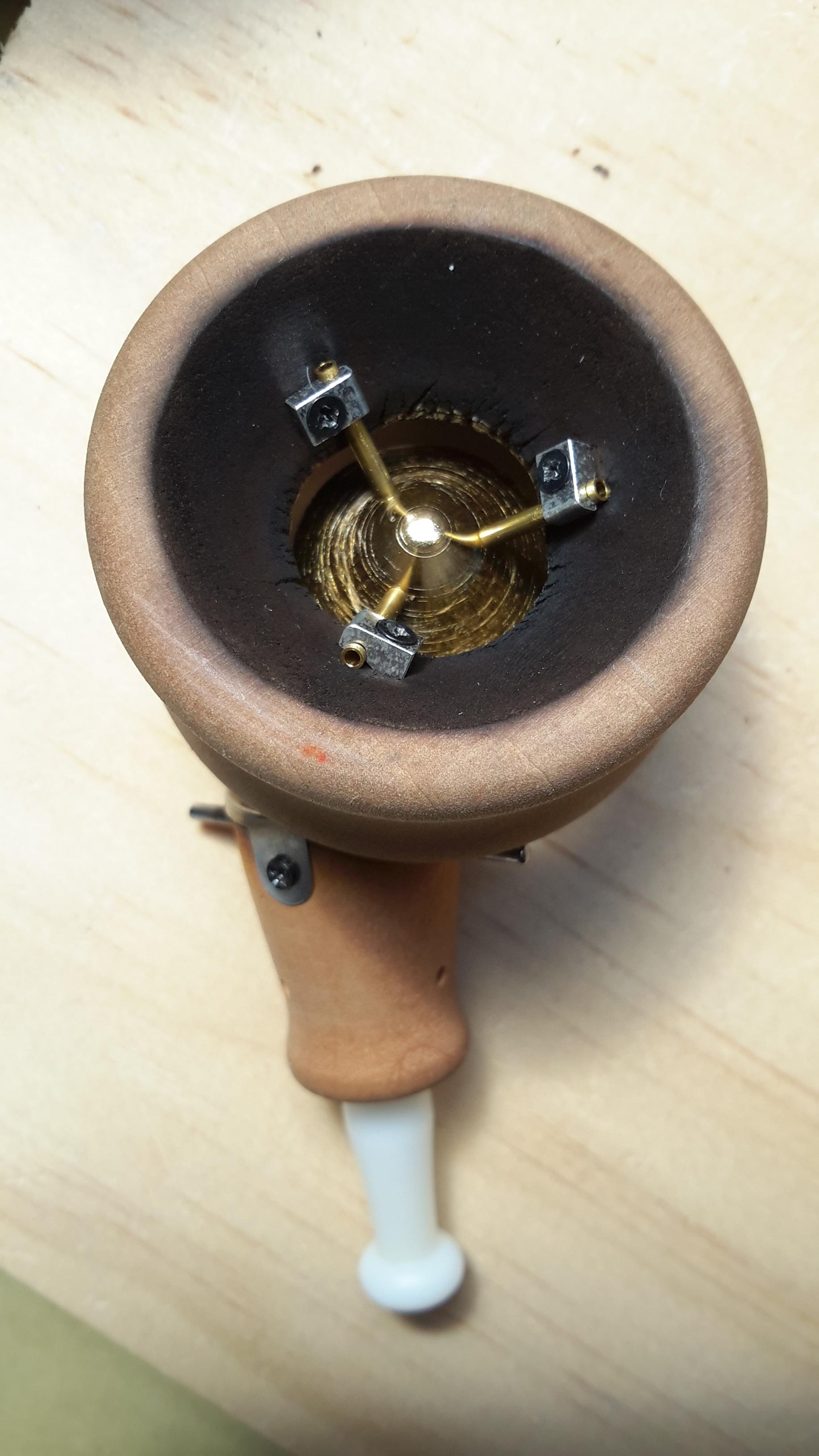Ok! However it's lost a little brass from the flange, if I hold it to a bright light there was a tiny tiny pin hole micro but enough to let flame in and slightly spoil a load. I've overcome this leak with a tiny spring around the offending leg and its sealed fine .
Id like to see inside that bowl how's it sealed, it clips on to a standard base with the pan attached as far as I can see , I wouldn't like to lite it without.

I think you're worried about something that can't happen. There's no way a small hole can "let flame in", that doesn't happen. First off, when heating there's no draft to 'pull it through'. Too much resistance through the load and midsection/stem for casual air flow. And even if you forced air through (say by sucking on the MP) no fire gets in.
Spark Arresters work this same way. Old time miners lamps, that used open flames in mines full of methane and coal dust (explosion waiting on a spark) used fine brass mesh so fresh air (with oxygen) could get in to feed the flame, and the light out, but not let enough heat out in any single place to spark a news story. Spark Arresters on off road vehicles work the same way, keeping sparks (which can include flaming bits of carbon) from setting the world on fire. Spark Arresters on steam locomotives work in a similar but different manner. In many cases the hot gasses and embers are forced into a swirl so they impact cooler metal (which is why so many 'smoke stacks' bell outwards, there's baffles inside that part. The idea is the same, rob the heat and stop the combustion cold (pun intended).
In an ill spent youth I spent some times at sea (doing service, not a Merchant Seaman). This included bulk tankers which carry all manner of cargoes, including raw and refined petroleum products and lampblack (very fine carbon used in dyes, inks and such, very explosive dust). Crews have to do '
bitter work' (washing the tanks down with superheated sea water, hence the name). This means suiting up in 'space suits' with air lines and entering the tanks to hose them down into the coffer dams (3 foot walls in the bottom of the tank to keep the cargo from sloshing about and tipping the ship over in storms and stuff) so it can be pumped out. Imagine a fire hose in a basketball stadium. You use a combination of steam and high pressure salt water to wash the ceiling and walls onto the floor. You need light, right? Enter the air lights. Air lines are run down and a sealed lamp with a turbine, generator and lamp attached. It uses mesh vents for the exhaust in case of a burn out (which happens a lot). A 'blow out' can breech the hull and sink you fast. Won't do the guys working inside a lot of good either. Serious stuff.
Fun device, (compressed) air in, light out. The job itself sucketh mightily. Trust me, you don't want it.
Remember the 'fire triangle'? Fuel, air and
heat? The metal of the mesh (or in our case 'leaks' in the pan') simply robs the heat part, no fire gets past, only gasses. All that could ever get through to where the herb is the interrupted products of combustion (mostly the Carbon to CO2 part, the water reaction happen first in the blue part of the inner flame). A modest bit of soot is the most you risk, even if you forced the flame where it didn't want to go. Same as guys that fire up the VM while hitting in on a WT. No combustion. Not to worry.
There is no seal in the normal VM anyway, right? The screen is simply held into the mouth of the pan giving an 'acceptably tight' seal but by no means perfect. Same as we see with VG and the new VapCap for instance. They too have (even more) path for the fire, but the cooler metal stops combustion from reaching the load.
Bottom line proof of the idea is the fellow who made it? He wouldn't have taken the photo if it was a flop?
OF













